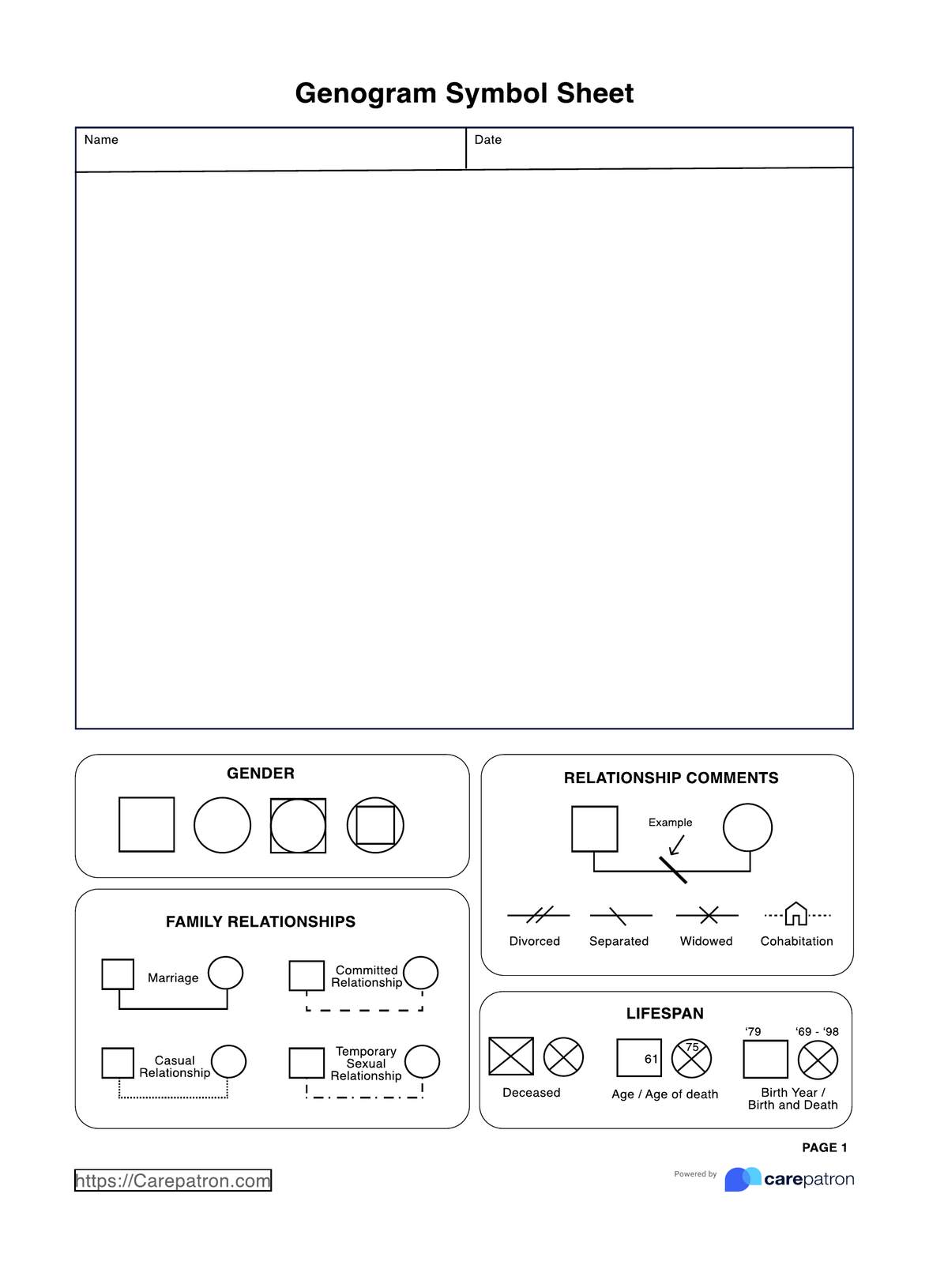In genograms, males are represented by squares, and circles represent females. This standard symbolization helps identify gender at a glance, which is essential for tracking hereditary patterns.

Genogram Symbols Sheet
Genogram Symbols are useful tools to understand the pattern of generations of a family. Download this sheet to help you also understand patterns of behavior and relationships.
Genogram Symbols Sheet Template
Commonly asked questions
Yes, genograms can include significant social relationships, such as close friends, mentors, or anyone who significantly impacts an individual’s life. These connections are usually marked differently to distinguish them from biological and marital relationships.
Absolutely. Genograms can illustrate various medical and psychological conditions through specific symbols or abbreviations next to the individual. This feature is crucial for understanding hereditary illnesses or family behavior patterns.
EHR and practice management software
Get started for free
*No credit card required
Free
$0/usd
Unlimited clients
Telehealth
1GB of storage
Client portal text
Automated billing and online payments











